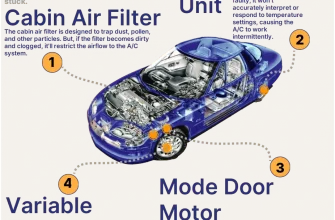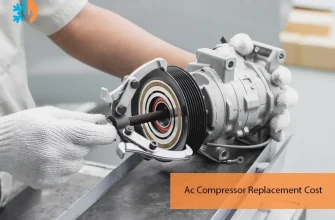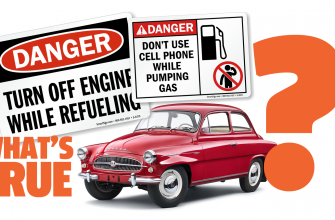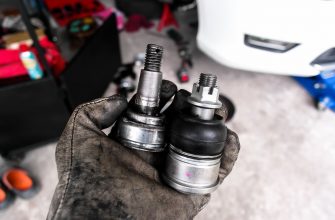The Constant Velocity (CV) axle is a critical component of your vehicle’s drivetrain, connecting the transmission to the wheels while allowing for smooth movement and steering. Over time, CV axles can experience wear and damage, leading to potential performance issues. In this article, we will guide you through the essential steps to inspect a CV axle for wear and damage, ensuring your vehicle remains in top condition.
- Understanding the CV Axle
- Signs of Wear and Damage
- Tools and Materials Needed
- Step-by-Step Inspection Process
- 1. Prepare Your Vehicle
- 2. Inspect the CV Boots
- 3. Check for Grease Leakage
- 4. Examine the CV Joints
- 5. Rotate the Axle
- 6. Reassemble and Test
- The Importance of Regular CV Axle Inspections
- When to Inspect Your CV Axles
- DIY vs. Professional Inspection
- Preventative Measures
Understanding the CV Axle
Before diving into the inspection process, it’s important to understand what a CV axle does. It is designed to transmit power from the engine to the wheels at a constant speed, even while the vehicle is turning. The axle consists of joints that allow for flexibility and movement, making it crucial for the overall performance of your vehicle.
Signs of Wear and Damage
Recognizing the early signs of CV axle wear can save you from costly repairs down the line. Keep an eye out for the following indicators:
- Clicking or Popping Noises: A common sign of a failing CV joint, especially when turning.
- Vibration: Excessive vibrations during acceleration can indicate a damaged axle.
- Grease Leakage: If you notice grease on the inside of your wheels or under the vehicle, the CV boot may be torn.
- Unusual Tire Wear: Irregular tire wear patterns could also indicate issues with the CV axle.
Tools and Materials Needed
To inspect a CV axle effectively, you will need the following tools:
- Jack and jack stands
- Wrench set
- Tire iron
- Flashlight
- Inspection gloves
Step-by-Step Inspection Process
1. Prepare Your Vehicle
First, park your vehicle on a level surface and engage the parking brake. Use a jack to lift the vehicle and secure it with jack stands. Remove the front wheels using the tire iron.
2. Inspect the CV Boots
The CV boots are protective coverings that keep grease in and dirt out. Check for any signs of cracks, tears, or damage. If the boot is compromised, it could lead to joint failure.
3. Check for Grease Leakage
Look for any grease that may have leaked from the boot. If you see grease on the axle or around the wheel assembly, the CV boot is likely torn and should be replaced immediately to prevent further damage.
4. Examine the CV Joints
With the wheel removed, visually inspect the CV joints. Look for any signs of rust, dirt, or excessive wear. A healthy joint should move smoothly without any grinding or clicking sounds. Gently shake the joint to check for excessive play.
5. Rotate the Axle
While inspecting, rotate the axle by hand. It should move smoothly without any binding or resistance. Listen for any unusual noises that may indicate internal damage.
6. Reassemble and Test
After completing your inspection, reattach the wheel and lower the vehicle. Take it for a short test drive to see if you notice any unusual sounds or vibrations. If anything seems off, it’s best to consult a professional mechanic.
Regularly inspecting your CV axles can help you catch problems early and maintain the safety and performance of your vehicle. If you identify any signs of wear or damage during your inspection, don’t hesitate to seek professional assistance. Keeping your CV axles in good condition ensures a smoother ride and prolongs the lifespan of your vehicle’s drivetrain.
Remember, a proactive approach to vehicle maintenance can save you time, money, and hassle in the long run!
The Importance of Regular CV Axle Inspections
Routine vehicle maintenance is often the unsung hero of automotive longevity, and inspecting your CV axles is no exception. These components are not just critical for performance; they also play a key role in your safety on the road. A compromised CV axle can lead to catastrophic failures, which can be not only costly but also dangerous. Thus, integrating regular inspections into your vehicle’s maintenance schedule is a proactive step toward ensuring its health.
When to Inspect Your CV Axles
While it’s wise to check your CV axles whenever you’re performing routine maintenance, certain situations warrant more immediate inspections:
- After Hitting a Pothole or Obstacle: A sudden jolt can misalign or damage CV components.
- During Seasonal Changes: Cold weather can exacerbate existing wear, making regular checks crucial.
- When Noticing Performance Changes: If you hear unusual noises or feel vibrations, inspect the axles without delay.
DIY vs. Professional Inspection
While a DIY inspection can help you identify visible issues, some problems may require a professional’s expertise. Mechanics have specialized tools and knowledge to diagnose and fix deeper issues that may not be immediately apparent. If you’re unsure about the condition of your CV axles, don’t hesitate to consult a trusted mechanic. They can provide a thorough evaluation and recommend necessary repairs or replacements.
Preventative Measures
Beyond inspections, there are several proactive steps you can take to extend the life of your CV axles:
- Regularly Check Fluid Levels: Ensure that your vehicle’s transmission and differential fluids are at the appropriate levels to maintain optimal performance.
- Avoid Sudden Maneuvers: Gentle driving, especially around corners, can reduce stress on the CV joints.
- Keep an Eye on Alignment: Misalignment can lead to uneven wear on CV axles, so regular wheel alignments are essential.
Inspecting your CV axles for wear and damage is a straightforward yet crucial part of vehicle maintenance. By recognizing the signs of trouble, knowing when and how to perform inspections, and taking preventative measures, you can help ensure that your vehicle runs smoothly and safely. A little diligence now can save you from significant headaches—and expenses—down the road.
So, the next time you’re under your vehicle or at the mechanic, remember the vital role your CV axles play in your driving experience; Take care of them, and they’ll take care of you.










Great information! The list of tools needed for inspection was particularly useful. I feel more prepared to tackle this maintenance task now.
The signs of wear and damage were explained in detail, which is super helpful. I’m definitely going to keep an eye out for those indicators on my car!
This article provides a very clear and thorough explanation of the CV axle and its importance. I learned so much about what to look for when inspecting my vehicle!
I appreciate the step-by-step approach to inspecting the CV axle. It makes the process seem much less daunting, especially for someone like me who isn’t very mechanically inclined.
Fantastic article! The clarity and detail really helped me understand how to properly inspect my CV axle. Thank you for sharing this valuable information!
I had no idea how crucial the CV axle was until reading this article. It’s amazing how much it affects vehicle performance!